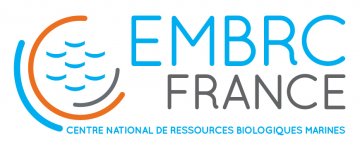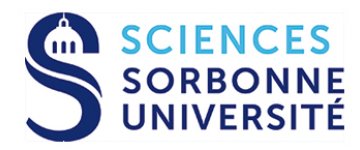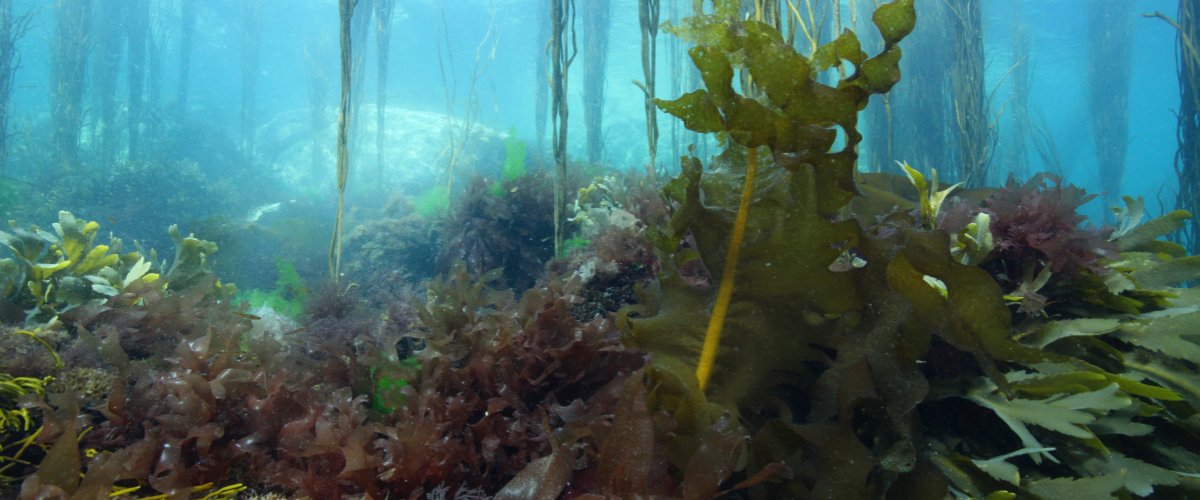Lionel Cladière
Associate professor, Sorbonne University

Maître de conférences UPMC section 65
After my work on the development of new genetic tools in order to make Zobellia galactanivorans the first marine bacteria model and to study the exact functions of the genes and proteins of interest and their involvement in the life of the cell as well as in its interaction with the seaweeds, I have changed for a new subject on polysaccharides.
In the majority of living organisms, polysaccharides are the carbon and energy reserves, mainly α-1,4-glucans (glycogen and starch) but also β-1,3-glucans in some organisms. In coastal environments, primary production is dominated by algae and algal biomass is mainly composed of polysaccharides, much of which is recycled by marine heterotrophic bacteria. Zobellia galactanivorans is a marine flavobacterium that has been isolated from the red alga Delesseria sanguinea and is able to grow using many algal carbohydrate sources (starch, alginate, lichenan, laminarin, agar ...).
The genomic analysis of Z. galactanivorans has confirmed its considerable potential as a degrader of polysaccharides. Its total number of CAZymes (Carbohydrate Active Enzymes) places this bacterium among the best equipped species within marine Bacteroidetes. Therefore, this marine bacterium has emerged as a model for the bioconversion of algal polysaccharides, including storage polysaccharides. Notably, several β-glucanases involved in the degradation of the brown algal storage polysaccharide (laminarin) have been recently characterized. But the metabolism of α-glucans remain uncharacterized in Z. galactanivorans.
Another marine bacterium has shown interesting capacities for algal polysaccharide degradation, the planctomycete Rhodopirellula baltica. Particularly R. baltica can use starch as sole carbon source. Its genomic analysis revealed 67 polysaccharidases and the annotation of the enzymes involved in carbohydrate metabolism was completely revised.
The aim of this project is to identify the mechanisms of a-glucan catabolism in Z. galactanivorans and R. baltica. A bioinformatic census of starch/glycogen-related enzymes has been undertaken in both marine bacteria. Candidate genes have been cloned according to a medium throughput strategy already developed for the overexpression of recombinant proteins from marine organisms.
Teaching activities
My teaching activities are mostly in the domains of molecular biology, microbiology, biochemistry.
- lead organizer of the Microbiology module that is part of the blocks of course “Risks, dangers and analysis tools » option of the Food Safety Specialization ‘License Professionnelle’ (L3 pro, organizer S. Egée).
- co-organizer of the Biochemistry teaching for first and second year students on the Bachelor of Science degree in Life Sciences / dual specialization: biology and mathematics. My roles include examining admissions (selection of new students) and ensuring that the module content is kept up to date with relevant research topics.
- teaching Marine Bacterial Genomics and Structural Genomics courses for Masters level students, including practical classes in Prokaryote Genome Annotation for first year students.
- Since 2014 myself and a colleague have designed a new course for second year students of the Masters BBMA course. This course, entitled « UE : Biotechnologie des Macromolécules d'Organismes Marins », aims to highlight the contributions of academic research to overcoming the problems and challenges of the production (aquaculture) or use of biological resources (eg. Biomass, molecules with technological or therapeutic potential).
- Having obtained the Programme of Investments for the Future (PIA) BLUE TRAIN, for the immediate and longer term training in the development of the blue bio-economy, since two years I have been responsible for the ‘Licence professionelle Biotechnologies Marines valorisation des Bio-ressources’ (L3 pro) in which I teach marine microbiology and biochemistry of marine enzymes.
Education, degrees, positions
2008- : Associate professor, Sorbonne University, section 65 : Cellular biology
2007-2008: Post-doctorate position at Laboratory Structural Biology of the Cell, Ecole Polytechnique, France
2006-2007: Post-doctorate position at Laboratory Structural Enzymology and Biochemistry, CNRS, France
2004-2006: : Post-doctorate position at Institute of Biochemistry and Molecular and Cellular Biophysics, CNRS, France
2000-2004: PhD of Université Paris-Sud, Orsay, in Microbiology
Publications
Martinelli, L., V. Redou, B. Cochereau, L. Delage, N. Hymery, E. Poirier, C. Le Meur, G. Le Foch, L. Cladiere, M. Mehiri, N. Demont-Caulet and L. Meslet-Cladiere (2020). "Identification and Characterization of a New Type III Polyketide Synthase from a Marine Yeast, Naganishia uzbekistanensis." Marine Drugs 18(12): 637.
Zhu, Y., F. Thomas, R. Larocque, N. Li, D. Duffieux, L. Cladiere, F. Souchaud, G. Michel and M. J. McBride (2017). "Genetic analyses unravel the crucial role of a horizontally acquired alginate lyase for brown algal biomass degradation by Zobellia galactanivorans." Environ MicrobiolMadec, E., A. Stensballe, S. Kjellstrom, L. Cladiere, M.
Coureux, P. D., C. Lazennec-Schurdevin, A. Monestier, E. Larquet, L. Cladiere, B. P. Klaholz, E. Schmitt and Y. Mechulam (2016). "Cryo-EM study of start codon selection during archaeal translation initiation." Nat Commun 7: 13366.
Collen, J., B. Porcel, W. Carre, S. G. Ball, C. Chaparro, T. Tonon, T. Barbeyron, G. Michel, B. Noel, K. Valentin, M. Elias, F. Artiguenave, A. Arun, J. M. Aury, J. F. Barbosa-Neto, J. H. Bothwell, F. Y. Bouget, L. Brillet, F. Cabello-Hurtado, S. Capella-Gutierrez, B. Charrier, L. Cladiere, J. M. Cock, S. M. Coelho, C. Colleoni, M. Czjzek, C. Da Silva, L. Delage, F. Denoeud, P. Deschamps, S. M. Dittami, T. Gabaldon, C. M. Gachon, A. Groisillier, C. Herve, K. Jabbari, M. Katinka, B. Kloareg, N. Kowalczyk, K. Labadie, C. Leblanc, P. J. Lopez, D. H. McLachlan, L. Meslet-Cladiere, A. Moustafa, Z. Nehr, P. Nyvall Collen, O. Panaud, F. Partensky, J. Poulain, S. A. Rensing, S. Rousvoal, G. Samson, A. Symeonidi, J. Weissenbach, A. Zambounis, P. Wincker and C. Boyen (2013). "Genome structure and metabolic features in the red seaweed Chondrus crispus shed light on evolution of the Archaeplastida." Proc Natl Acad Sci U S A 110(13): 5247-5252.




